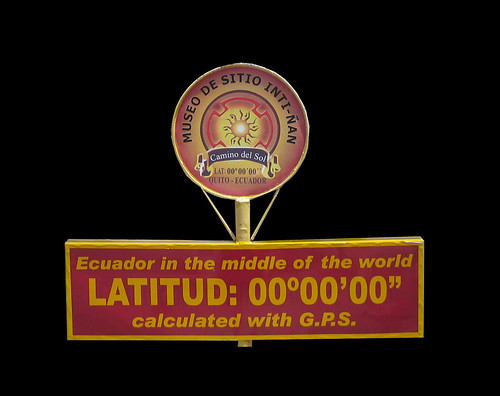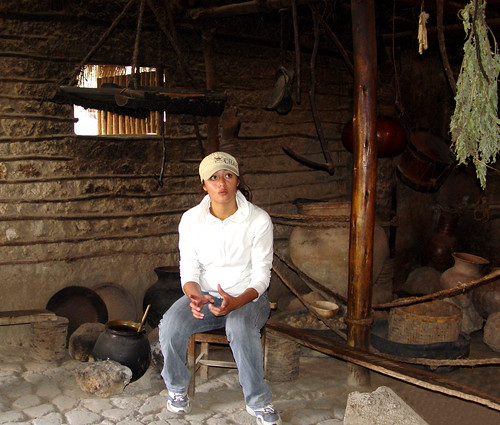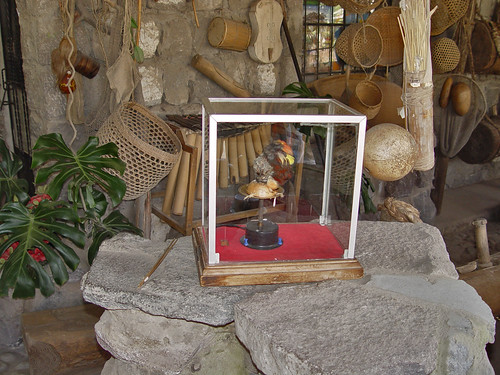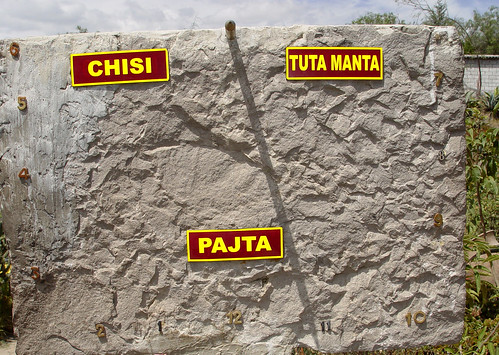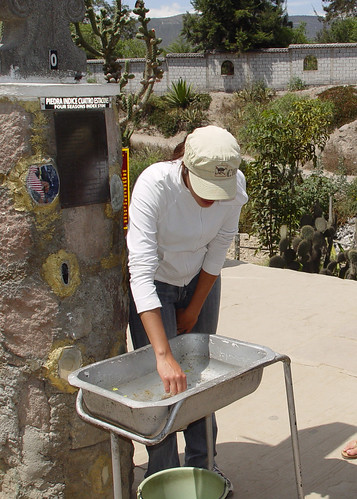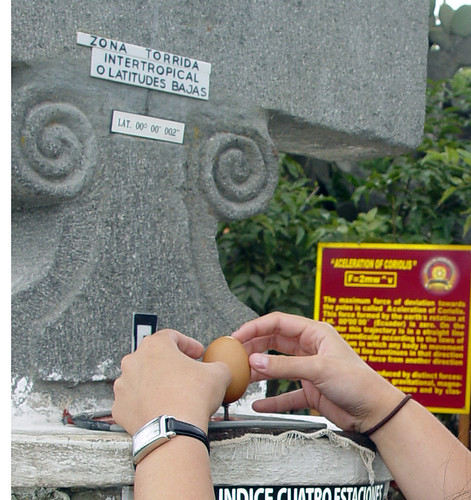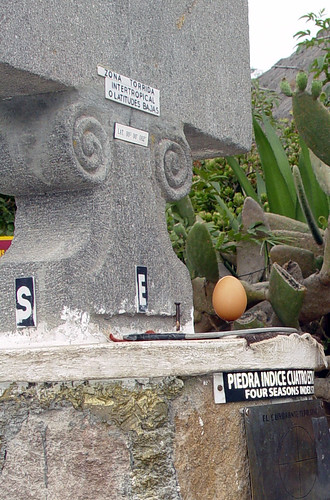On our way to the Galapagos Islands in the summer of 2007, we stayed in
A burial site. The deceased is placed in a tight fetal position in a pot like the one on the right and the remaining artifacts are for the journey:
Other artifacts:
A grizzly, shrunken head:
I love the sundial indicating when it was morning (tuta manta), noon (pajta), or night (chisi). That would be a welcome brand of time-keeping! The native tribes did not have a numbering system; these numbers are a modern addition. Note how the numbers range from six to six because at the equator the sun always rises and sets at six.
There was a sign that claimed: “On the equator your weight is less than in your country because of the bulge of the earth. Thus being farther from the center of the earth, the force of gravity is less.” And here I thought the earth was round. When I asked how much less my weight would be, they said it was about a kilo. Of course, we will ignore the fact that our mass remains the same.
The guide then performed an experiment meant to demonstrate the Coriolus force. She placed a sink on the northern hemisphere, where the water drains counter-clockwise and then moved the sink a few feet over to the southern hemispehere where the water drains clockwise. When placed exactly on the equator, the water drains straight down. She placed a few small leaves to help show the movement of the water.
We were invited to balance an egg on a nail, a feat that can only be accomplished twice a year elsewhere on earth:
There are plenty of websites refuting the authenticity of these experiments. Regardless, I thought they were very interesting, entertaining and they underscore the unique properties of the equator.
My husband told me an interesting equator story about an aircraft that supposedly had polar confusion when it crossed the equator. The guidance system assumed its orientation to be relative to the North Pole. When it cross the equator, the guidance system thought the plane flipped over, so it “righted” itself into the upside down position. It is probably an urban myth, but at least one source reported that it was rumored that early versions of Microsoft’s F-16 Flight Simulator game had this same “feature” (as we software types like to call bugs). You can read more about it here.

